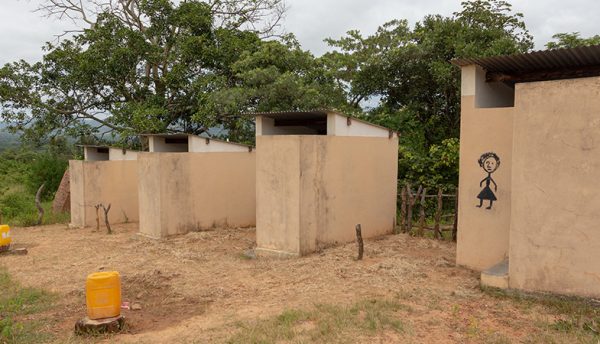Robert Erasmus, Managing Director at Sanitech, discusses the challenges faced in South Africa and the opportunities and resolutions available to tackle the pit latrine crisis, specifically in school, in the region.

The presence of pit latrines in South African schools remains a pressing socio-economic challenge, endangering the health and safety of learners. Despite the Basic Education Department’s commitment to eliminate pit latrines by 2025, progress has been sluggish, and deadlines have been missed. Exacerbated by funding limitations and spending constraints, the government’s inability to replace these facilities has resulted in delays and inadequate improvements. The sheer geographical distribution of schools, particularly in rural areas and the absence of proper sanitation infrastructure further complicate matters, making it difficult to definitively address the issue.
Despite governmental challenges surrounding pit latrine eradication, the implications for public health and human dignity are unthinkable if the situation persists unremedied. While it may not be feasible to solve this crisis overnight, there are several potential solutions available and corporate South Africa can play an important part in mitigating obstacles to progress through collaborative efforts.
Budget problems: complex allocation and slow execution
One of the primary barriers to addressing pit latrine eradication is significant financial constraints. This challenge has two facets. Firstly, there is often an allocation of funds to address sanitation problems at the provincial level, but the actual spending and execution of these funds can be complex and slow, hampering progress.
Secondly, the ability to unlock funding and execute projects is impeded by various factors, including navigating tender and procurement processes that move at a glacial pace, sometimes taking longer than two years. Additionally, at a local level, municipalities struggle to effectively utilise their allocated funds due to geographically remote locations. Many affected communities are in rural areas, which makes it a struggle to find suitable or reputable contractors and resources to address the issue, particularly where procurement processes have a locally sourced requirement.
Danger to the health, safety and dignity of communities
Pit latrines in South Africa pose a host of dangers that encompass health risks, environmental degradation and human dignity violations. These inadequate facilities foster disease transmission due to unsanitary conditions and groundwater contamination, jeopardising community health. Improper waste disposal contributes to soil and water pollution, while lack of access to safe sanitation infringes upon human rights, particularly affecting the privacy and safety of women, girls and vulnerable community members.
Toward practical, effective resolution
Urgent, holistic solutions are needed to mitigate these multifaceted dilemmas. After assessing various proposed solutions, including advanced technological concepts suggested by international NGOs such as solar panels and reactors, it is clear that South Africa needs a tailored, practical and cost-effective approach. These solutions should address factors such as vulnerability, theft and vandalism considerations while also meeting relevant criteria. Taking input from a variety of sources, the focus has turned to identifying realistic alternatives that can bring substantial improvement without incurring exorbitant expenses, while meeting the necessary criteria for safety, serviceability and dignity.
A uniquely engineered, uniquely South African alternative
After years of refinement, a suitable solution has been engineered specifically for South Africa’s challenging conditions. The Khusela Dry Sanitation Tank (DST) unit brings together all the most viable aspects gleaned from the assessment journey. It ensures children’s safety and prevents them from falling into open pits. It also provides a dignified experience for residents by eliminating the smell and sight of waste. This dry sanitation toilet incorporates unique features like a rotating bowl and a replaceable bladder for improved sanitation and environmental considerations, which means that there is no more exposure to raw waste and associated health risks. Additionally, its self-contained waste bladder means that underground water is protected from contamination, an important consideration in our water-scarce country.
Community Health and dignity: a CSI initiative
Simple to install, the Khusela DST unit can be retrofitted to current Ventilated Improved Pit (VIP) pit latrines, which makes it a cost-effective, feasible improvement. The only challenge that remains is addressing how to get this solution out to where it’s most needed, given all the hurdles currently slowing the government down in its efforts to eradicate pit latrines. If we’re to move with any kind of urgency, we must sidestep the cumbersome public sector processes as much as possible. This is where the private sector and corporate entities can play an instrumental role. Collaborative initiatives through Corporate Social Investment (CSI) projects offer a speedier route to progress.
By partnering with a reputable sanitation expert, corporates can ensure effective project execution that meets expectations and with a collaborative CSI approach, these challenges can be addressed expeditiously. Investing in sanitation is not only impactful with its vital role in safeguarding communities’ health and safety but most particularly for the safety and wellness of children in schools. While sanitation projects may not possess the same immediate appeal as other initiatives, directing CSI resources toward this fundamental need will ultimately yield significant and lasting positive results, going a long way toward restoring the health and dignity of affected communities.
Click below to share this article

